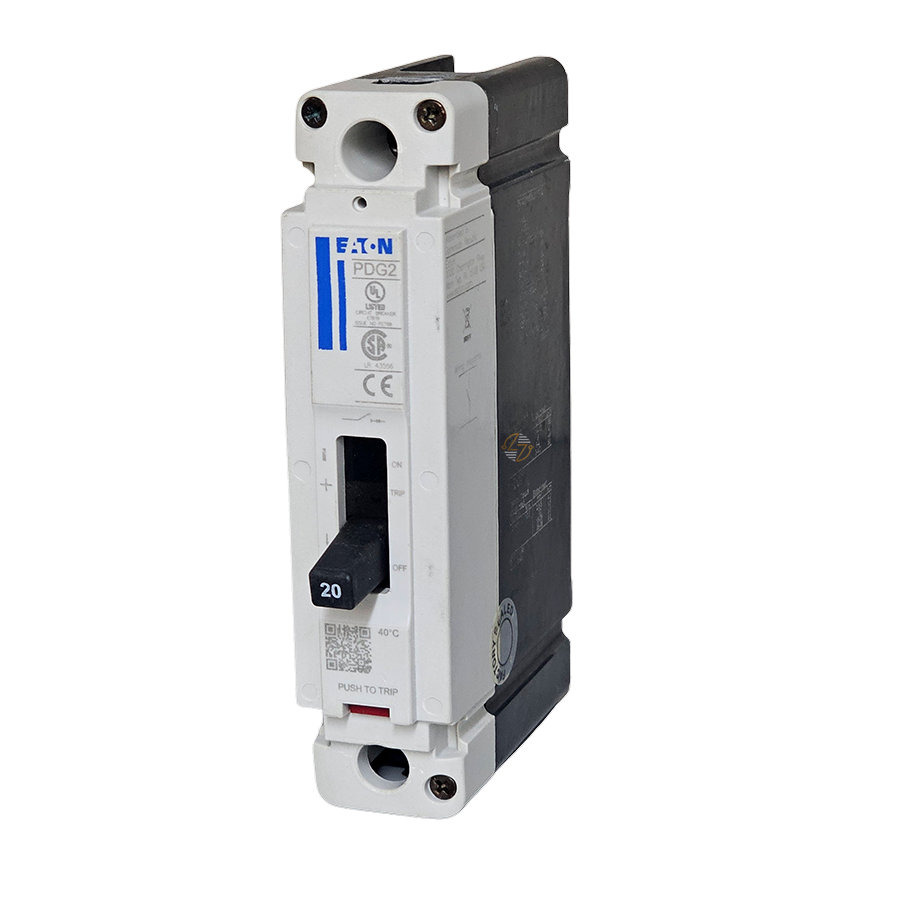Eaton
PDG21M0040TFFL - 40Amp Circuit Breaker
PDG21M0040TFFL - 40Amp Circuit Breaker
Couldn't load pickup availability
PDG21M0040TFFL - 40Amp Circuit Breaker
The Eaton PDG21M0040TFFL molded case circuit breaker offers robust circuit protection for modern electrical systems, featuring a single-pole design and a 40Amp current rating. With a high interrupting capacity of up to 65kA at 480V, this Frame 2 breaker is built to handle demanding applications. Its fixed-fault trip unit (T-M) ensures consistent performance, while standard load-only terminals simplify installation. Compliant with global standards, including UL 489 and IEC 60947-2, this breaker is suitable for industrial, commercial, and residential use, ensuring dependable protection in diverse environments.
Key Features and Benefits:
- Exceptional Interrupting Capacity: Rated at 65kA at 480V (UL) and 100kA at 240V (UL), ensuring superior protection under fault conditions.
- Compact and Efficient Design: Frame 2 single-pole construction delivers reliable performance in a compact footprint.
- Reliable and Durable: Engineered for long-term use in demanding applications, providing peace of mind and operational efficiency.
Technical Specifications:
- Amperage Rating: 40Amp
- Poles: 1
- Voltage Rating: 600VAC maximum
- Interrupting Capacity: 65kA at 480V (UL), 35kA at 600V (UL/CSA), 100kA at 240V (UL), IEC ratings include 70kA Icu at 380-415V
- Dimensions: 3.5 in (L) x 1.38 in (W) x 6 in (H)
- Weight: 1.9 lbs
- Trip Unit: Fixed-fault (T-M) for dependable circuit protection.
Material Compliance and Certifications:
- Certifications: UL 489, IEC 60947-2, CSA, and CCC ensure adherence to international safety standards.
- RoHS Compliant: Environmentally conscious design reduces ecological impact.
Suitability:
- The Eaton PDG21M0040TFFL circuit breaker is designed to meet the needs of single-phase electrical systems in industrial, commercial, and residential settings. Its high interrupting capacity and compact design make it a dependable solution for protecting against overloads and short circuits.
Share

